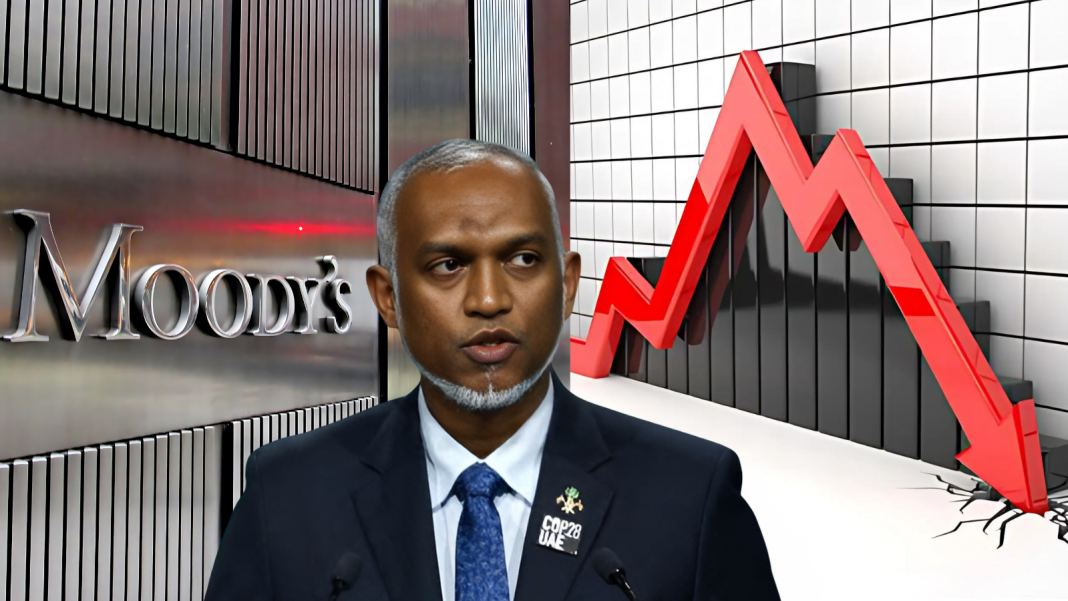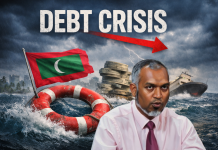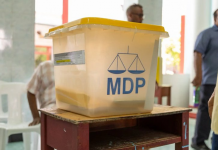The Maldives is facing serious economic challenges after the global credit rating agency Moody’s downgraded the nation’s credit rating from Caa1 to Caa2. This downgrade, which comes with a review for further potential downgrades, signals a warning about the country’s growing financial vulnerabilities and an increasing risk of defaulting on its debt.
Why Has the Maldives Been Downgraded?
Moody’s decision to lower the Maldives’ rating was driven by one of the most pressing concerns—the country’s dangerously low foreign currency reserves. These reserves, crucial for meeting foreign debt obligations, amounted to only $437 million by the end of August 2024. This is enough to cover just about 1.5 months of imports, which is significantly below the upcoming foreign debt payments of $600-700 million in 2025, and over $1 billion in 2026.
In the next 12 to 18 months, the Maldives faces the daunting task of repaying large amounts of debt, and there are serious doubts about whether these obligations can be met without external financial assistance. While the government is actively working to secure international support, it is uncertain if this will be enough or arrive in time. Complicating matters further are the country’s large fiscal and trade deficits, where the Maldives continues to spend far more than it earns. This imbalance is putting tremendous pressure on the economy.
Mounting Economic Pressure
The economy has long been burdened by substantial deficits, and the slow implementation of necessary reforms is adding to the strain. Although some steps have been taken, they are not enough to address the scale of the problem. The Maldives Monetary Authority (MMA) is finding it increasingly difficult to maintain the value of the Maldivian rufiyaa, as foreign exchange reserves continue to diminish.
The MMA has been pumping foreign currency into the market to maintain the rufiyaa’s peg to the U.S. dollar, but with reserves running low, this strategy is becoming unsustainable. Unless urgent action is taken, the value of the currency could come under serious threat.
Institutional Weaknesses
A key issue highlighted by Moody’s is the inability of institutions to implement timely and effective solutions to tackle financial risks. The lack of capacity to reduce the excess local currency in circulation is undermining the effectiveness of monetary policies, further worsening the foreign exchange reserve situation.
If swift action is not taken, there is a serious risk of the Maldives being unable to meet its debt obligations, which could lead to devastating consequences for the economy and the people.
What Happens Next?
The next few months are critical. If the government cannot secure the necessary external financing soon, the situation could deteriorate further. Moody’s review will focus on whether the Maldives can raise enough money from international sources to stabilize foreign exchange reserves. This would provide some breathing room to implement much-needed reforms.
The government has announced measures to increase revenue in foreign currency, such as raising airport taxes, green taxes, and levying new duties in U.S. dollars. While these are positive steps, it remains uncertain whether they will be sufficient or can be implemented quickly enough to make a difference.
Tourism and Heavy Reliance on Imports
Tourism remains the lifeblood of the economy, but it also brings challenges. While tourist arrivals are increasing, the Maldives imports most of its goods, and the high costs of these imports—particularly food and energy—are placing additional pressure on foreign currency reserves.
Even with the boost in tourism, the high import bill is worsening the current account deficit, meaning the country continues to spend much more on imports than it earns from tourism. This imbalance is draining the already limited foreign exchange reserves and leaving the government in a difficult position as it tries to maintain economic stability.
Currency Conversion Risks
Another critical risk highlighted in Moody’s report is related to currency conversion. As foreign exchange reserves continue to dwindle, it could become much harder for businesses and individuals to convert local currency into U.S. dollars. This could lead to major disruptions in trade and everyday transactions, further shaking confidence in the economy.
Environmental and Social Challenges
The Maldives’ economic difficulties are compounded by its vulnerability to environmental risks. As one of the most low-lying countries in the world, it faces existential threats from rising sea levels and extreme weather patterns caused by climate change. These risks threaten not only the environment but also key economic sectors such as tourism and fishing.
Social challenges are also present, particularly when it comes to a lack of skilled labor and disparities between Malé and the outer atolls. Youth unemployment and low female participation in the workforce are ongoing concerns. Although efforts are being made to improve education, housing, and basic services, many of these improvements are concentrated in the capital, leaving other regions struggling.
Governance Issues
Governance remains a challenge. Although improvements have been made in fiscal transparency and the fight against corruption, much more needs to be done. Tackling financial crimes, increasing budget accountability, and improving fiscal management are crucial for restoring investor confidence.
The downgrade by Moody’s serves as a stark warning. The Maldives’ economy is at a critical crossroads, and swift, decisive action is required to secure external financing and implement meaningful reforms. Without this, the country risks facing a default, which would have disastrous consequences for the economy, livelihoods, and international reputation.


















